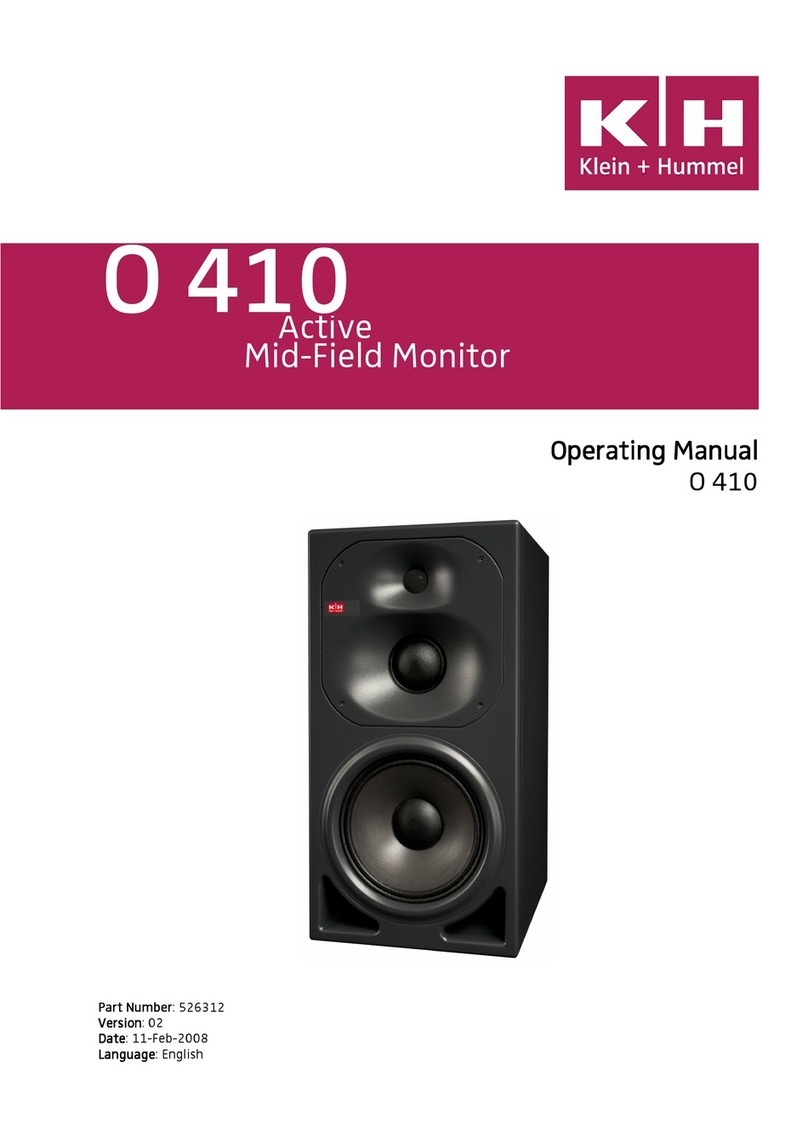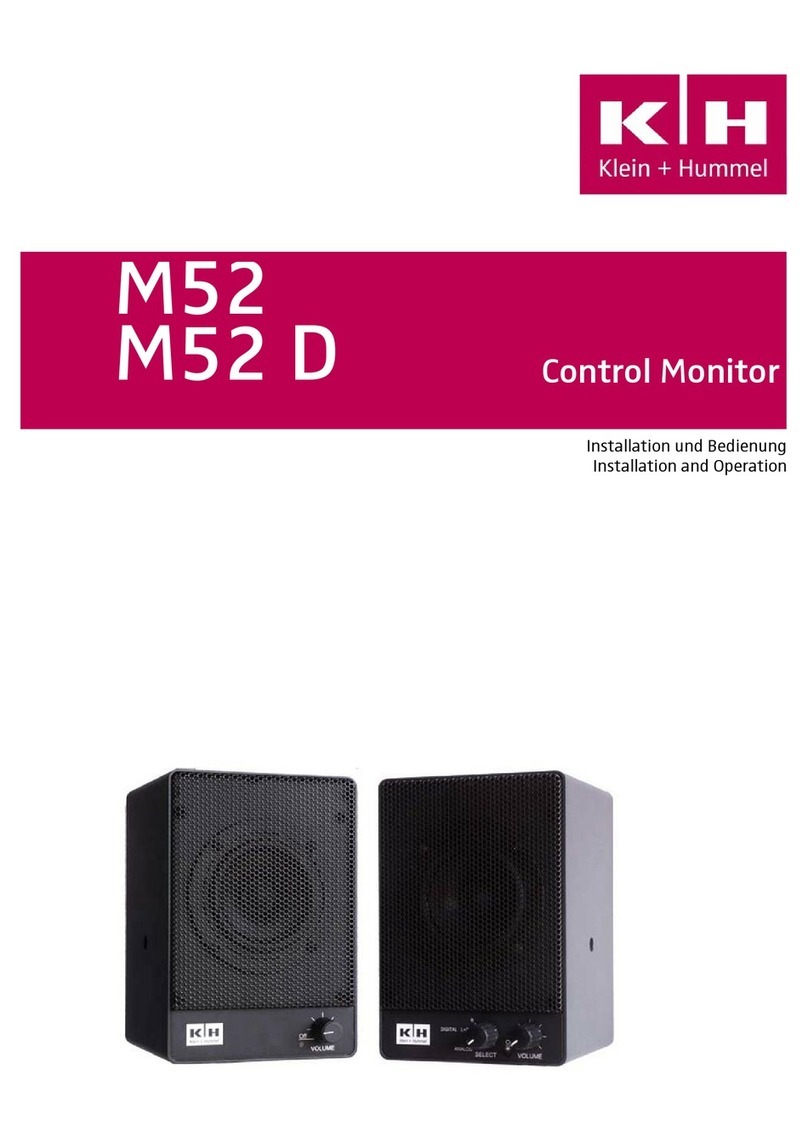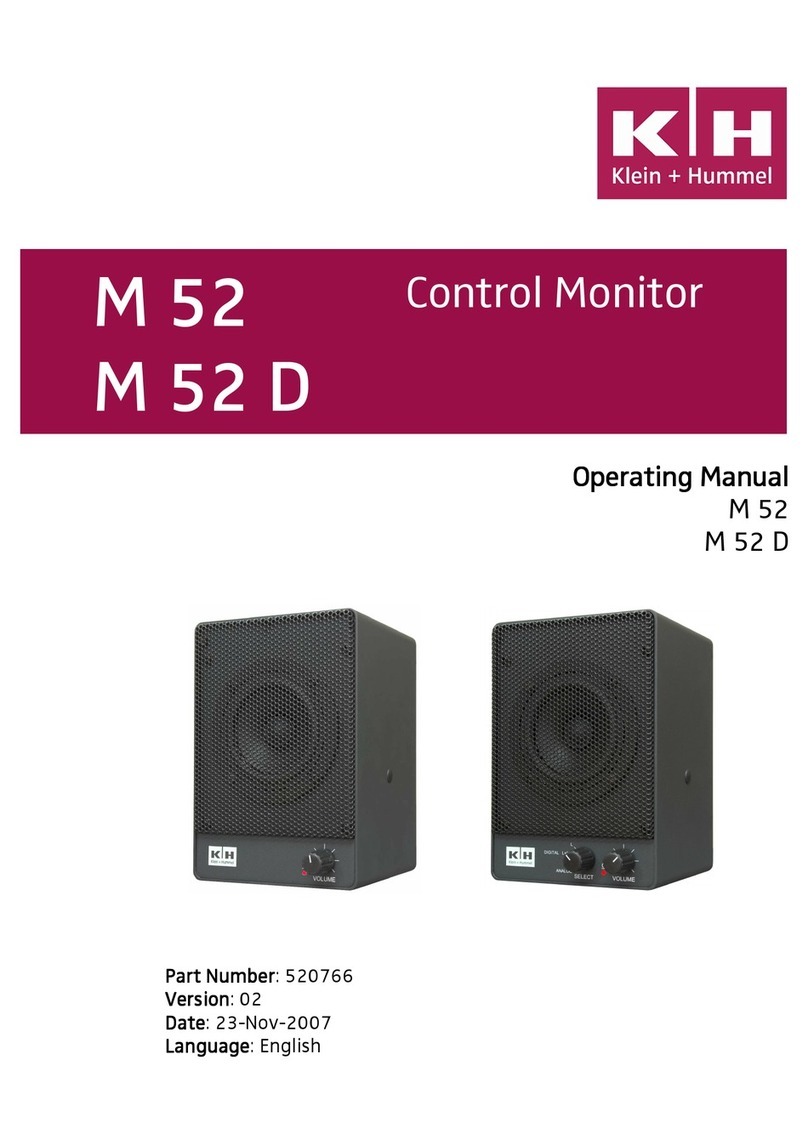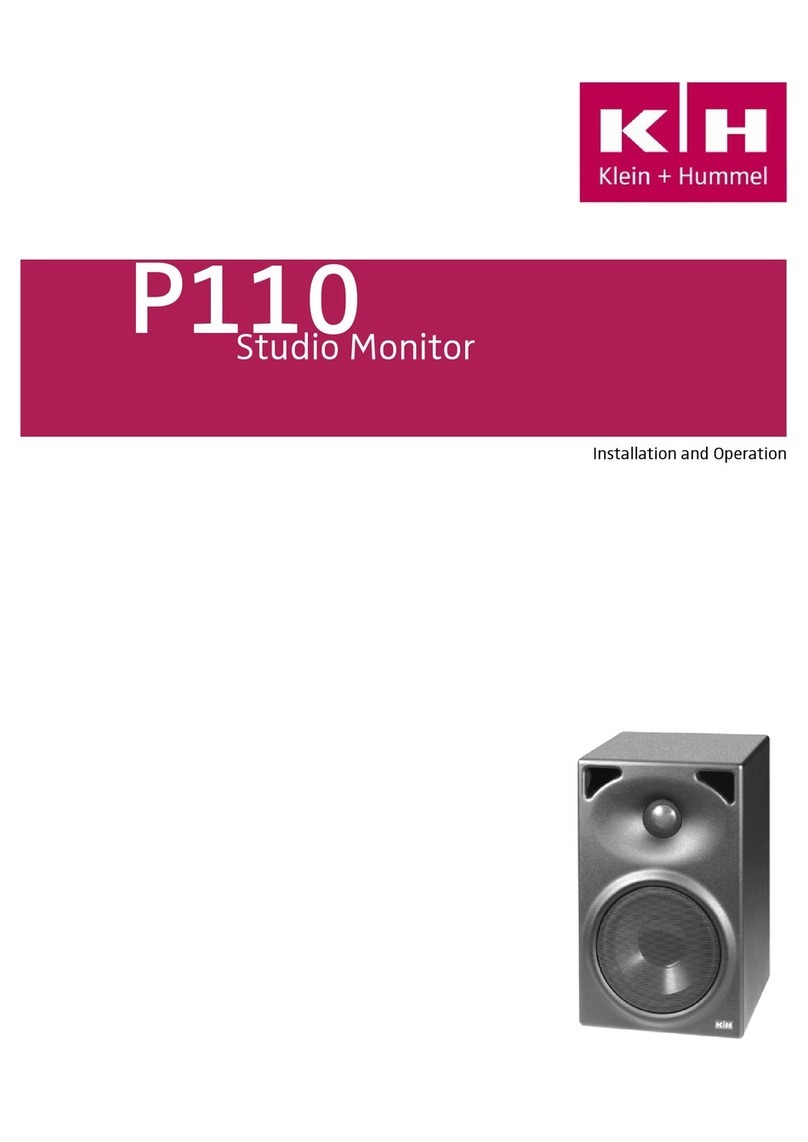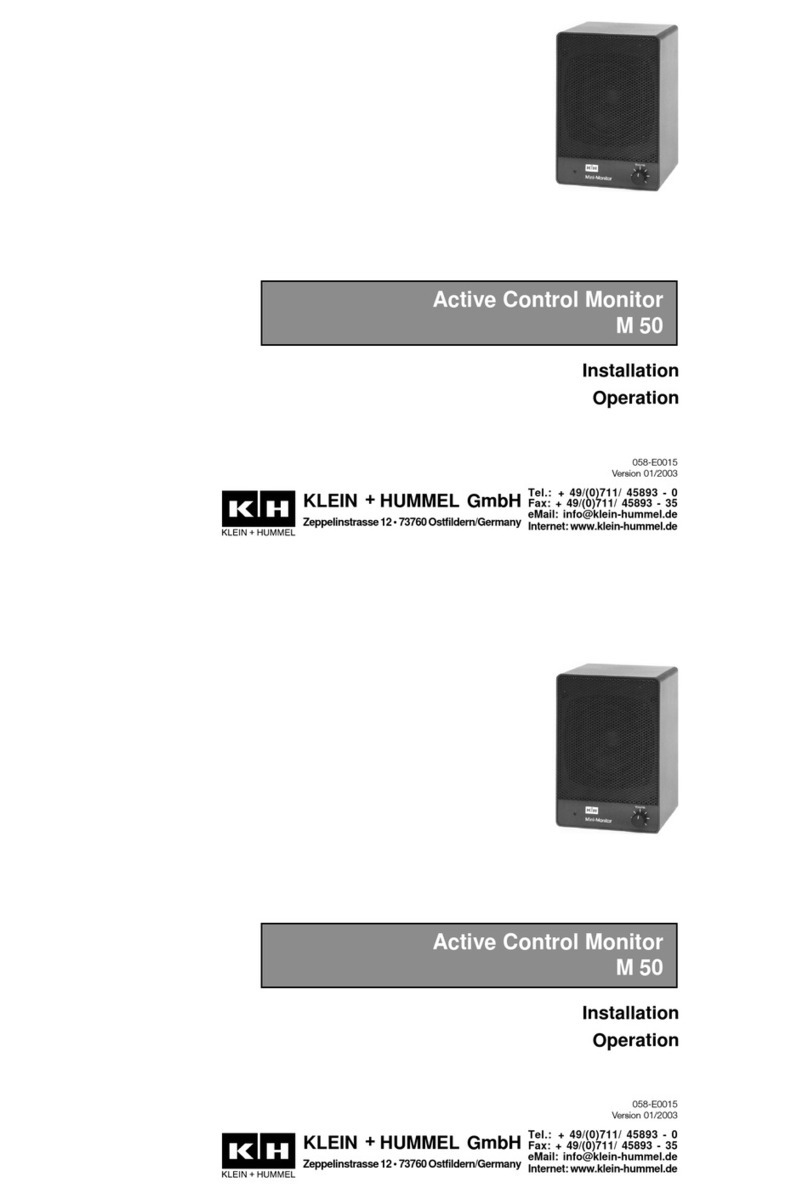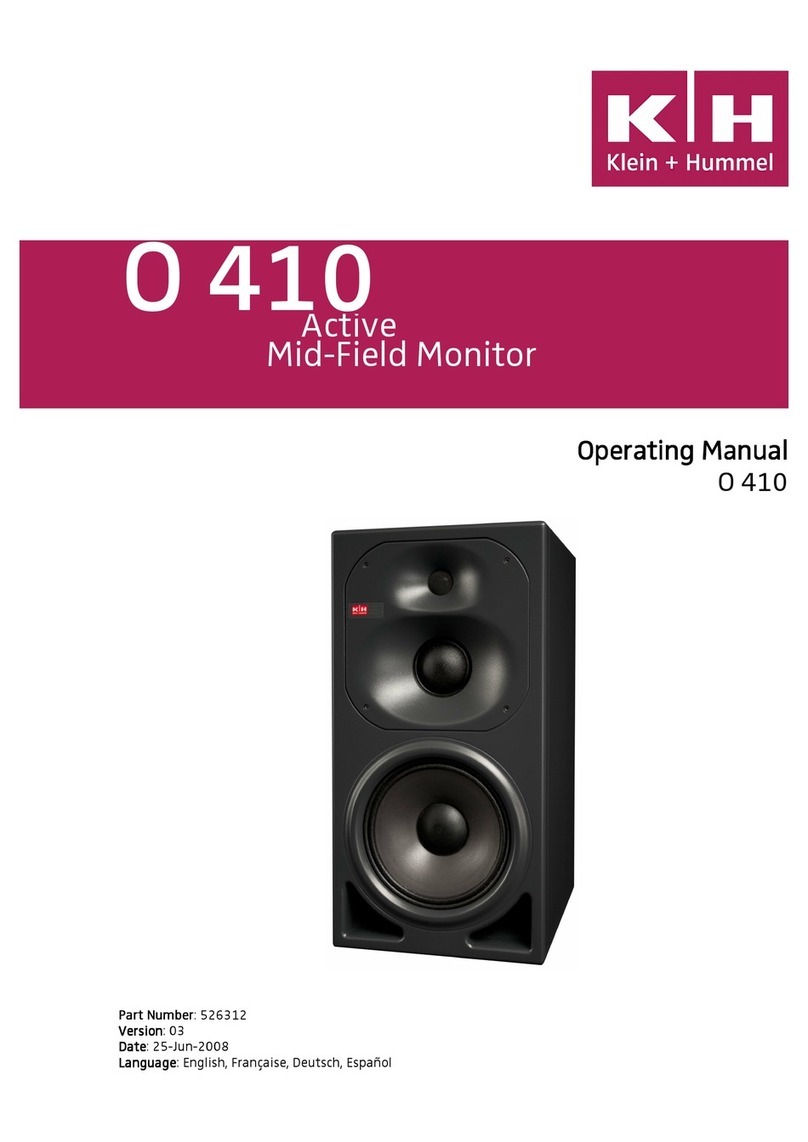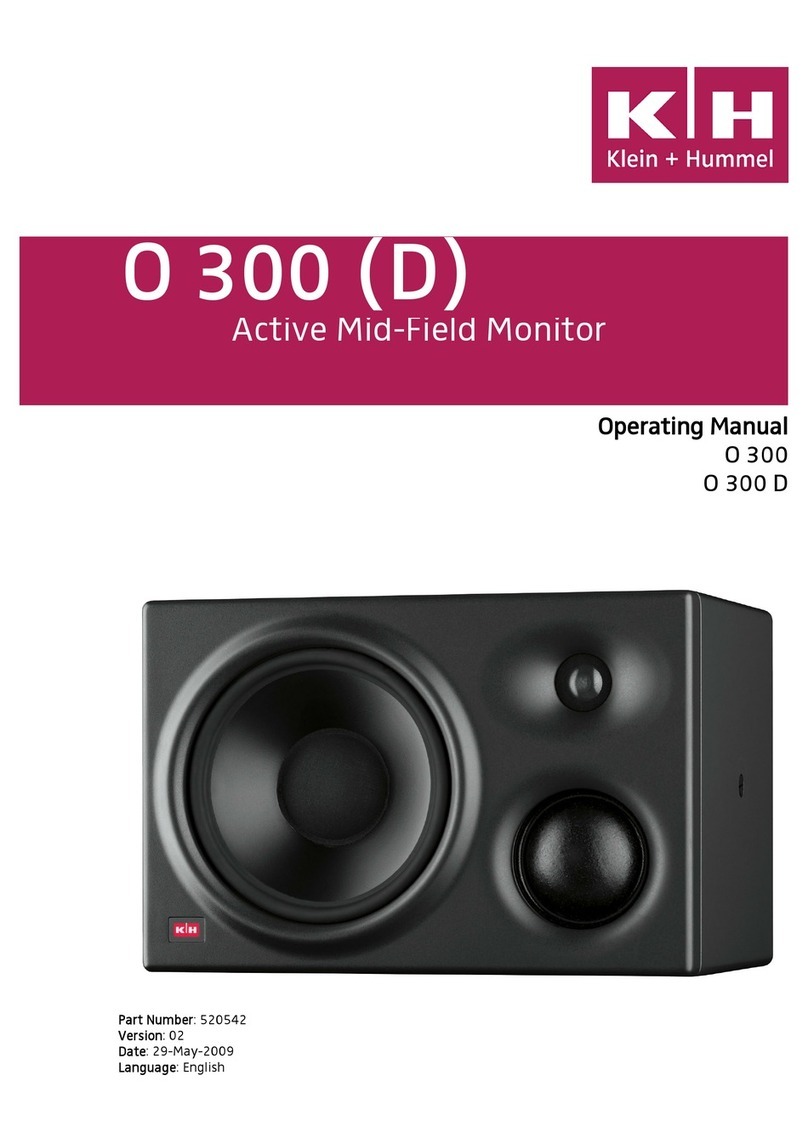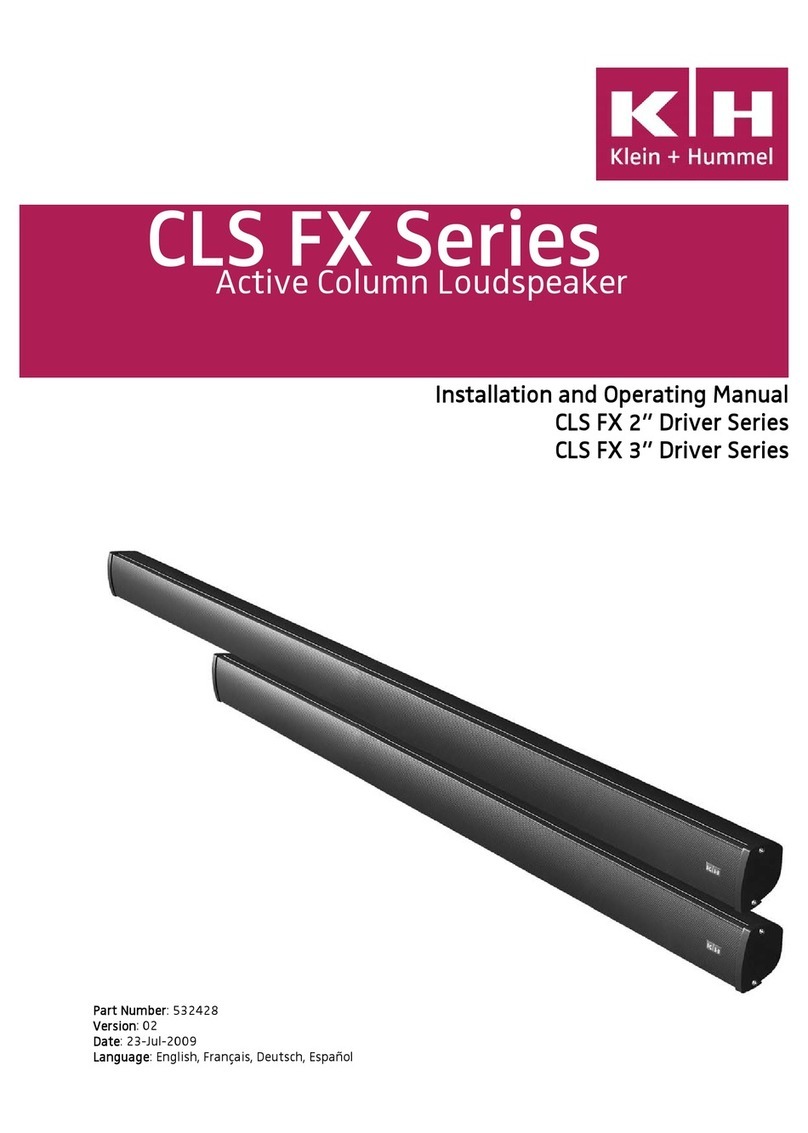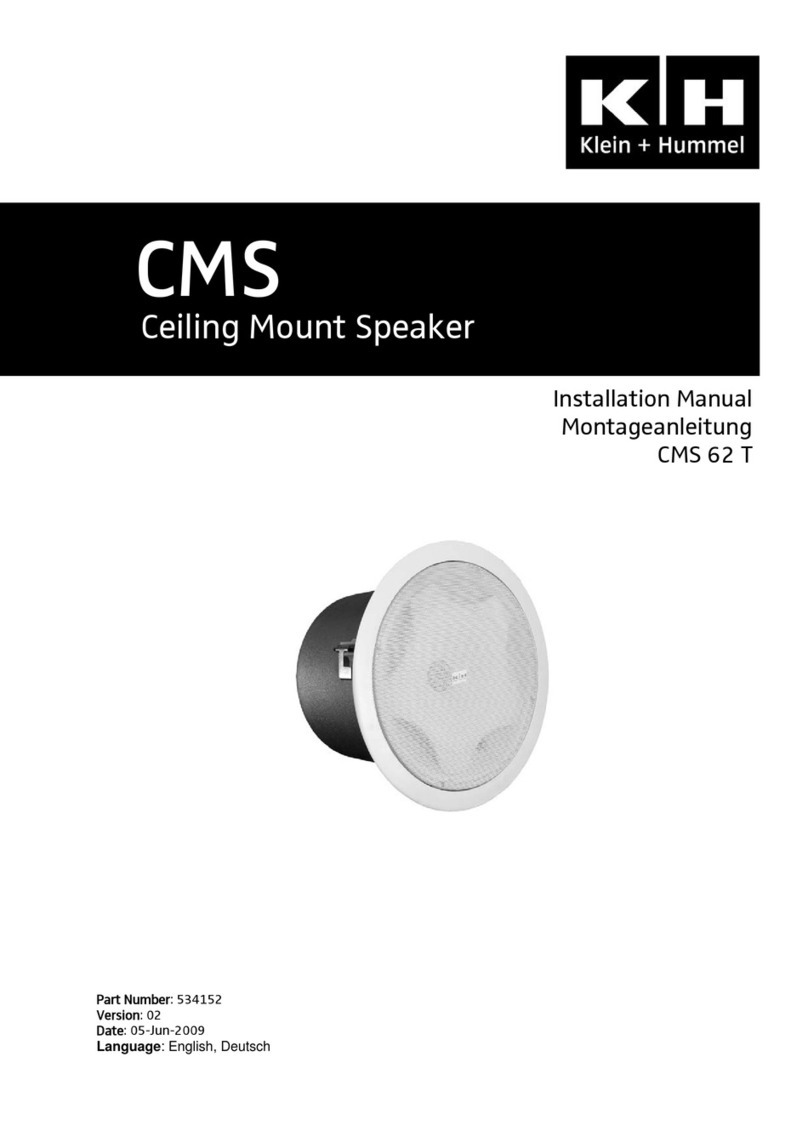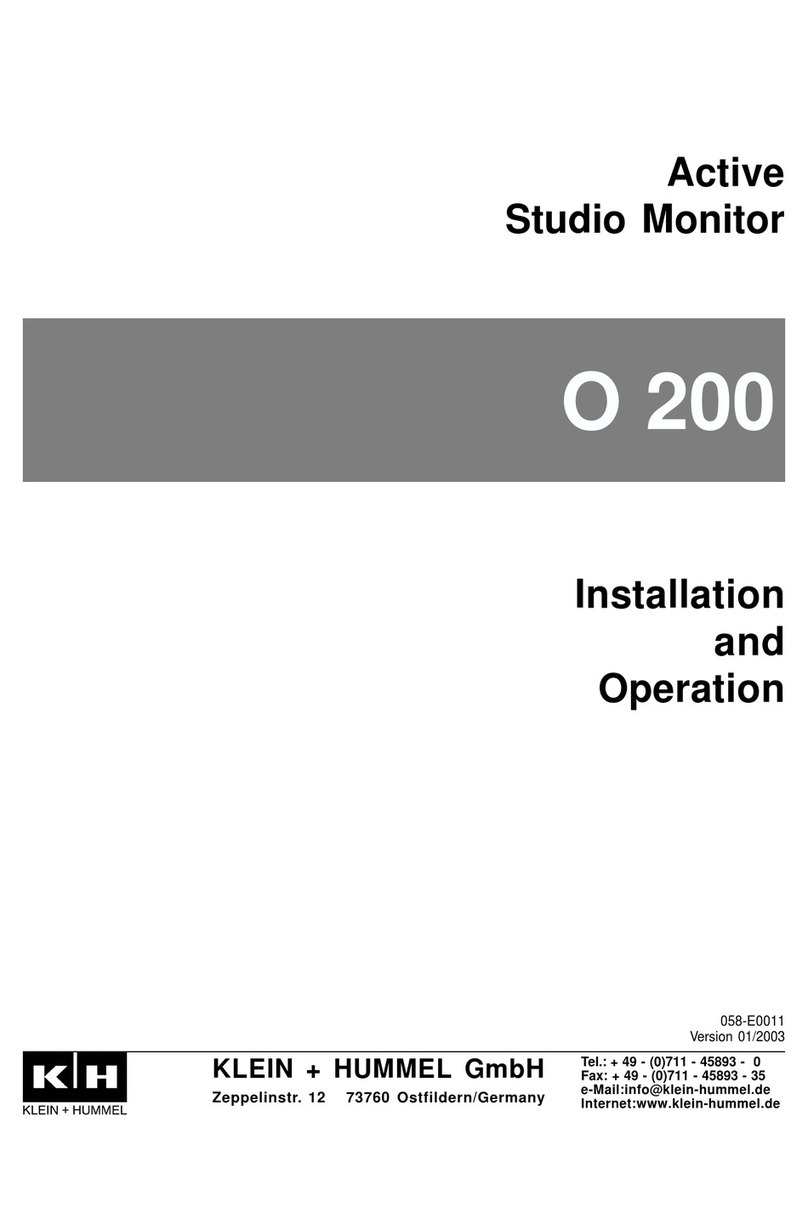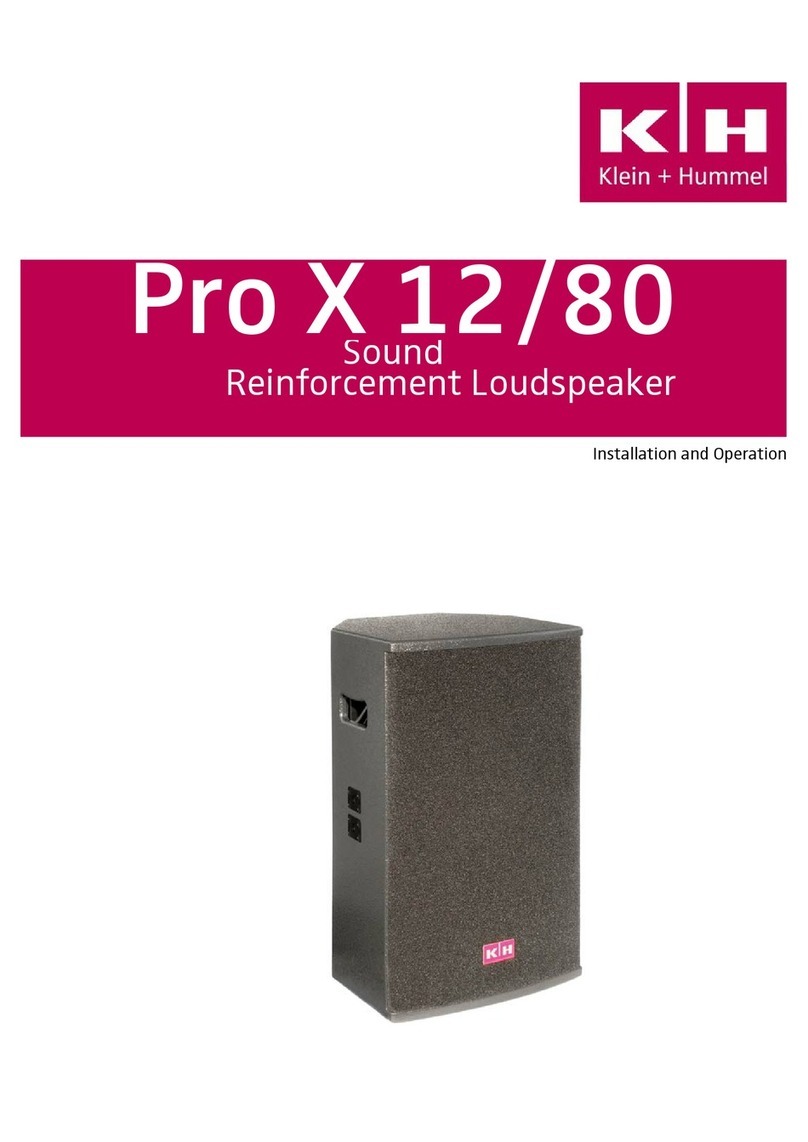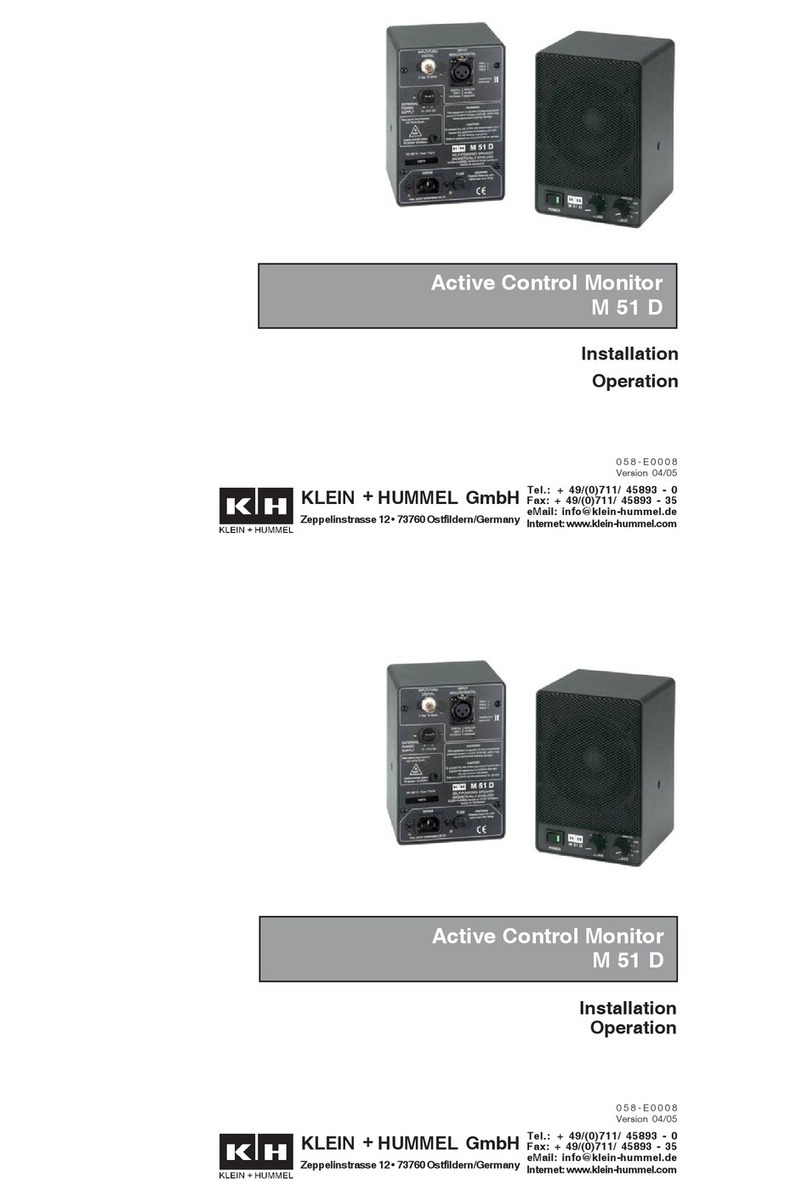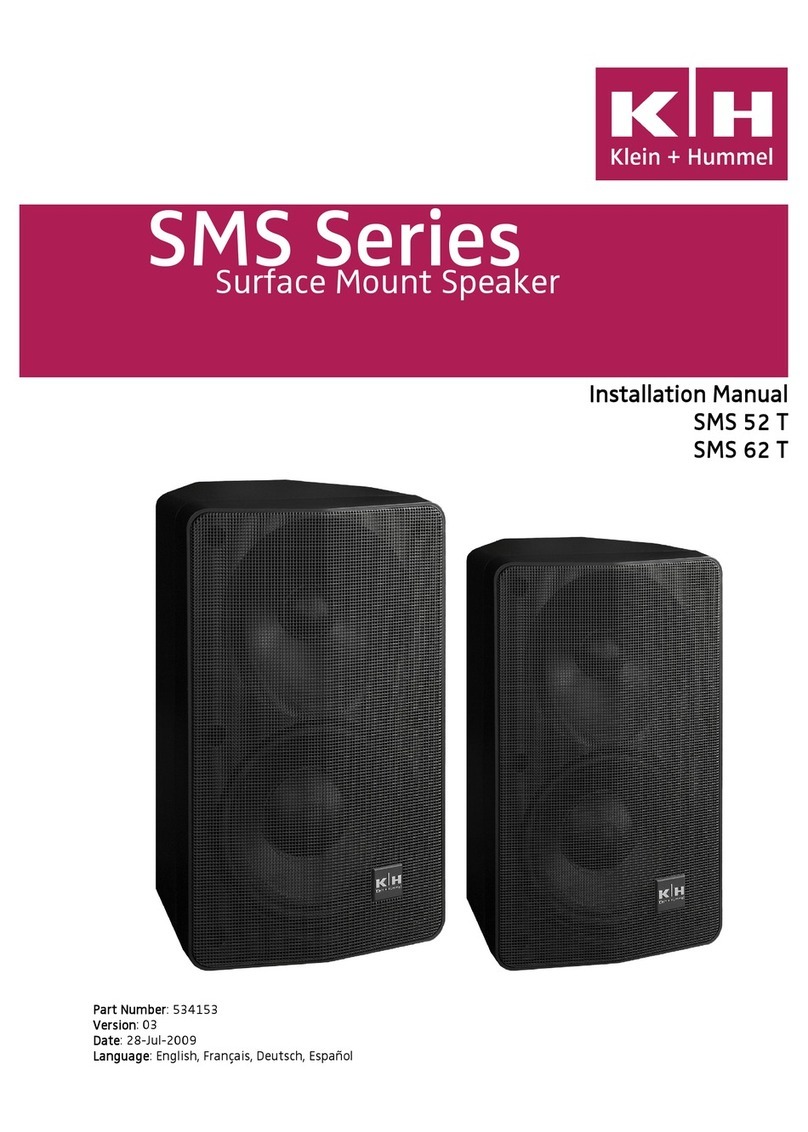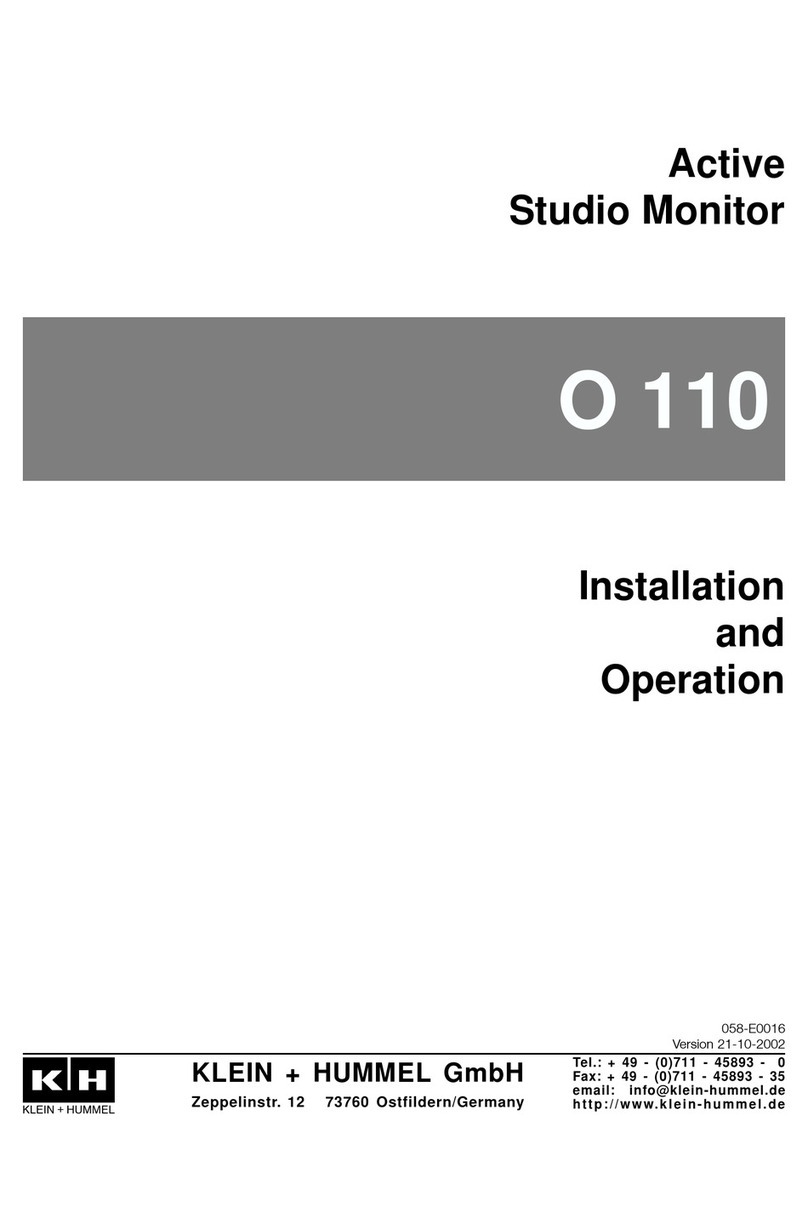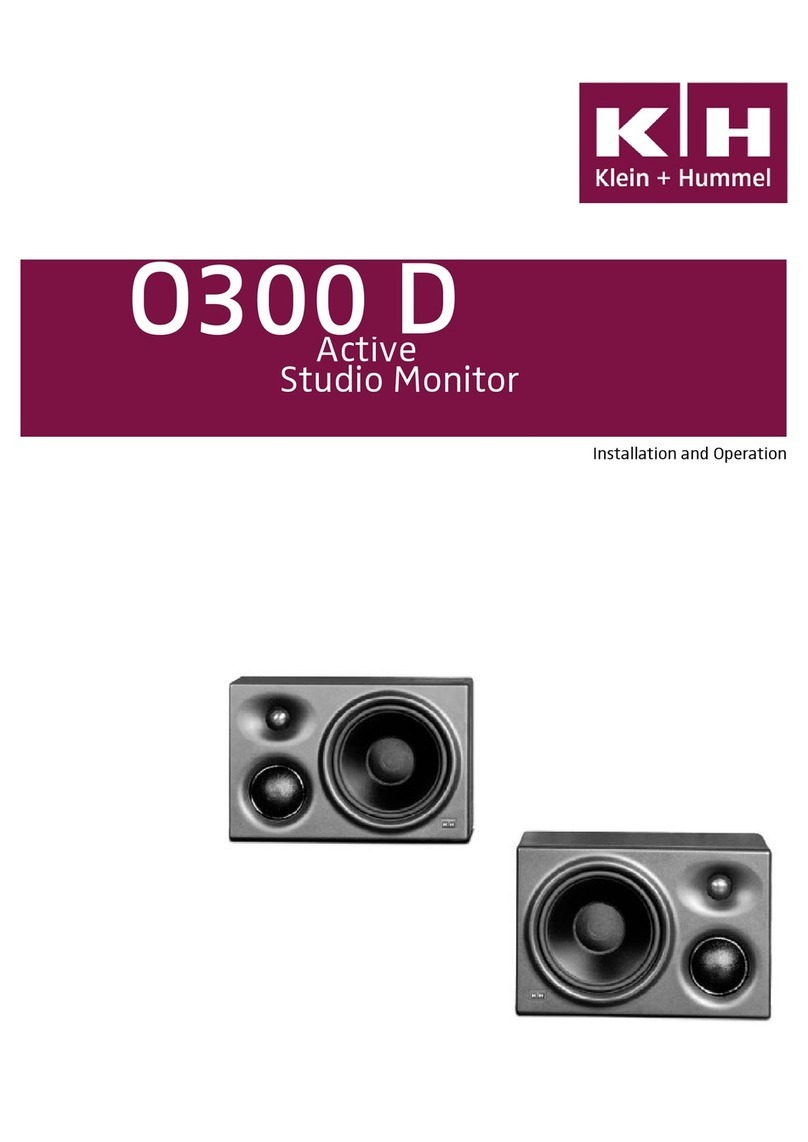Page 4 Active Studio Monitor O 110 D
1. Installation and Operation
It is absolutely essential that you read
and observe the Safety Instructions on
page 2 before connecting or using this
device.
1.1 Operating Conditions
The K+H model O 110 D active studio monitor is
intended for use over a range of ambient
temperatures from +10° C to +40° C (+50° F to
+104° F). During transport or storage,
temperatures from -25° C to +70° C (-13° F to
158° F) are permissible.
1.2 Installation
The loudspeaker chassis used in the O 110 D are
magnetically shielded, allowing these loud-
speakers to be mounted side by side with
a video or computer monitor without adversely
affecting the screen. One of the finer features
of the O 110 D active studio monitor is its unusually
uniform off - axis directivity, which results in a very
wide ”sweet spot”. Preferred placement of the
cabinet is in the upright position, for the dispersion
in the verical plane was intentionally kept narrower
than in the horizontal.
In certain cases, for example if there are hard,
reflective surfaces both to the left and right of
the loudspeakers, it would make sense to
operate the loudspeakers on their side. The
reduced horizontal directivity in this position would
then be helpful in minimizing any phase cancel-
lation caused by comb - filter effects.
When considering placement, please take into
consideration the possibilities offered by both of
the room compensation switches described in
section 1.6.5.
On the back of the unit you will find two M8-style
threaded bushings for use with various mounting
options. These holes are labeled ”Speaker mount
option.” The bushings will accommodate either the
LH 32 wall bracket adapter or the LH 31 mounting
bracket for use with additional mounting
accessories.
The plastic screws that occupy theseThe plastic screws that occupy these
The plastic screws that occupy theseThe plastic screws that occupy these
The plastic screws that occupy these
threaded holes from the factory may notthreaded holes from the factory may not
threaded holes from the factory may notthreaded holes from the factory may not
threaded holes from the factory may not
be used for the actual mounting of abe used for the actual mounting of a
be used for the actual mounting of abe used for the actual mounting of a
be used for the actual mounting of a
loudspeaker under any circumstances.loudspeaker under any circumstances.
loudspeaker under any circumstances.loudspeaker under any circumstances.
loudspeaker under any circumstances.
Please ensure that these threaded holes are
always plugged so that the volume of air sealed
within the cabinet may only pass through the
precisely calculated bass - reflex openings.
1.3 Connection to Mains Power
Several versions of the O110D are available for
different mains voltages. Please verify the label on
the back side of the device is correct. If it
becomes necessary to use a different mains-
cable plug, pay attention to proper grounding
when wiring a replacement plug.
1.4 POWER Switch
When you switch power on, there is a 7 second
delay before the amplified signal is sent
to the loudspeakers. This delay prevents the loud
popping sounds that otherwise are generated
by prior devices in the signal chain as they are
switched on. You will find this arrangement
particularly useful if your studio uses a master
switch to power up all the equipment at once.
When power on the O 110 D is turned off, on the
other hand, or if there is a general power failure in
the area, the signal flow to the speaker is
immediately stopped, preventing any loud pops.
1.5 Mains Power Fuse
Should you ever need to replace the power fuse,
please ensure (first of all that the unit is unplugged
from the mains!) and that only the following type
and value of fuse is used:
For 230-240 volts AC: 1 A Slo-Blo (5 x 20 mm)
For 117 volts AC: 2 A Slo-Blo (5 x 20 mm)
For 100 volts AC: 2.5 A Slo-Blo (5 x 20 mm)
1.6 Input analog-digital / Level / Room
Compensation / Ground Lift
1.6.1 XLR - INPUT
ANALOG / DIGITAL - AES/EBU
The sensitivity of the electronically balanced
input is rated at +6 dBu (1.55 volts). The
three - pole female XLR jack is wired in the
standard manner (pin 1 = ground, pin 2 = +,
pin 3 = negative). If you are connecting unbalanced
sources, you will need to solder a bridge between
pins 1 and 3:
unbalanced
balanced
as seen from solder terminals of male XLR
Figure 3: Pin layout of input connector
In digital mode, this same XLR input accepts the
digital signal according to the AES/EBU
specification (110 Ohm balanced).
!
!
